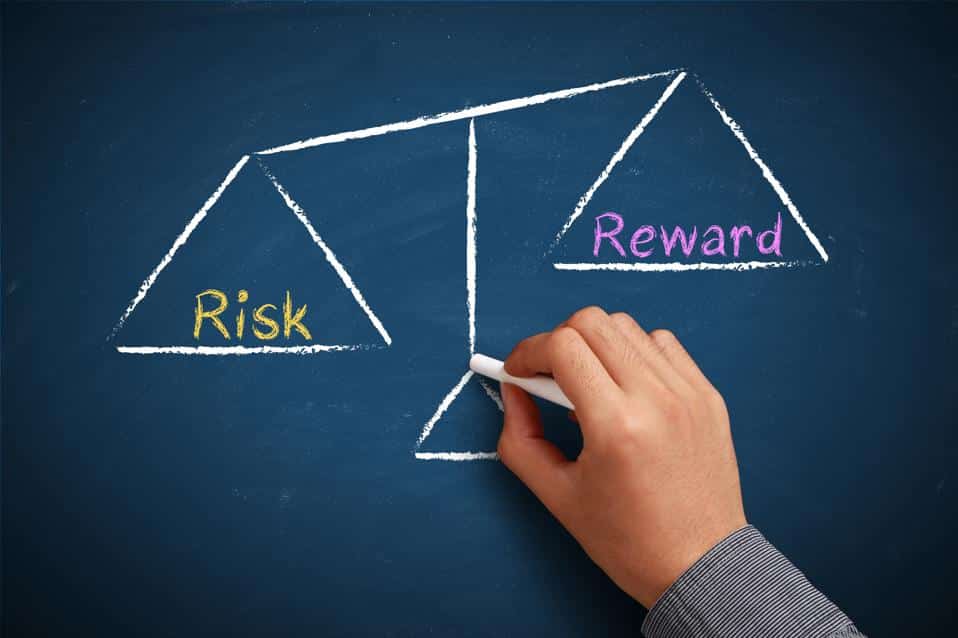🛡️ Safe and Smart: Balancing Risk and Reward in Your Portfolio

Investing is a journey, not a destination. Like any worthwhile adventure, it requires careful planning, a clear understanding of the terrain, and a well-calibrated approach to risk. The core challenge for every investor is finding the sweet spot—the perfect balance between risk and reward that aligns with their financial goals, time horizon, and personal comfort level. Achieving this balance is the hallmark of a "safe and smart" portfolio.
The Fundamental Duo: Risk and Reward
Before building your strategy, you must first deeply understand the two forces at play:
1. The Nature of Risk
In finance, risk is defined as the degree of uncertainty and potential financial loss inherent in an investment. It is not the certainty of loss, but the variability of returns. The most common types of risk include:
- Market Risk (Systematic Risk): The risk that all investments in a market will decline due to macro-economic events (e.g., recessions, interest rate changes, political crises). This risk cannot be eliminated through diversification alone.
- Specific Risk (Unsystematic Risk): The risk associated with a particular company or industry (e.g., a product recall, a CEO scandal). This risk can be mitigated through diversification.
- Liquidity Risk: The risk that you may not be able to sell an investment quickly enough to prevent a loss or meet a financial need, often associated with assets like real estate or private equity.
The mantra in investing is: Higher potential reward virtually always comes with higher risk. This relationship is represented by the Capital Market Line (CML) in modern portfolio theory .
2. The Pursuit of Reward
Reward is simply the return you earn on your investment, usually expressed as a percentage of the initial investment over a specific period. Returns can be generated through:
- Capital Appreciation: The increase in the market price of an asset (e.g., a stock increasing from $100 to $110).
- Income Generation: Regular payments received from the asset (e.g., dividends from stocks, interest from bonds, or rental income from property).
The "smart" investor doesn't just chase the highest return; they chase the highest risk-adjusted return—the best return for the level of risk taken.
🧠 Know Thyself: Defining Your Investment Profile
A truly safe and smart portfolio is personalized. It starts with a comprehensive self-assessment:
A. The Time Horizon
How long until you need the money?
- Short-Term (0-3 years): Money for a down payment or a wedding requires minimal risk. Preservation of capital is paramount. Assets should be highly liquid (e.g., high-yield savings, short-term treasury bills).
- Long-Term (10+ years): Retirement savings allows for greater risk, as you have time to recover from market downturns. This is where a higher allocation to equities (stocks) is generally appropriate.
B. The Risk Tolerance
This is your emotional and psychological capacity to withstand drops in your portfolio's value without panicking and selling. It’s often determined by asking: "If my portfolio dropped by 20% overnight, what would I do?"
- Conservative: Prioritizes safety and capital preservation. Prefers bonds and stable dividend stocks.
- Moderate: Seeks growth but is willing to accept moderate volatility. A balanced mix of stocks and bonds.
- Aggressive: Prioritizes maximum long-term growth and can tolerate significant market swings. Heavily allocated to growth stocks, international markets, and potentially alternative assets.
C. Financial Capacity to Take Risk
Even if you have a high emotional tolerance, your current financial situation might dictate a lower actual risk capacity. If you have high-interest debt or a small emergency fund, your capacity for investment risk is low. A safe portfolio ensures financial stability is addressed first.
🛠️ Strategic Tools for Balancing Risk and Reward
The balance is achieved through the disciplined application of established financial principles.
1. Asset Allocation: The Portfolio’s Cornerstone
Asset allocation—the distribution of your investments among different asset classes (stocks, bonds, cash, real estate, etc.)—is the single most important determinant of a portfolio's return and risk.
A common rule of thumb for a moderate portfolio is the "110 Minus Your Age" rule to estimate your stock percentage. For a 40-year-old, $110 - 40 = 70\%$, suggesting a 70% stock and 30% bond split. While a simplification, it correctly anchors the principle that risk should decrease as you age and your time horizon shortens.
| Investor Profile | Stocks (Equities) | Bonds (Fixed Income) | Cash/Cash Equivalents |
| Aggressive | 75% - 100% | 0% - 20% | 0% - 5% |
| Moderate | 50% - 70% | 25% - 45% | 5% - 10% |
| Conservative | 10% - 30% | 60% - 80% | 10% - 20% |
2. Diversification: The Only Free Lunch
As noted earlier, diversification helps eliminate specific (unsystematic) risk. It is often called the "only free lunch" in finance because it can reduce overall risk without necessarily lowering expected returns.
Smart diversification means more than just owning 20 different stocks. It means diversifying across:
- Asset Classes: Stocks, bonds, commodities.
- Geographies: U.S., Developed International, Emerging Markets.
- Sectors: Technology, healthcare, consumer staples, energy.
- Investment Styles: Value (undervalued companies), Growth (companies with high growth potential), and Core (a mix of both).
By combining assets whose returns are not perfectly correlated (meaning they don't all rise and fall at the same time), the portfolio’s overall volatility is smoothed out.
3. Rebalancing: Keeping the Scales Even
Over time, market movements will shift your portfolio away from its target allocation. For instance, if stocks perform well, your stock percentage might climb to 80% from a target of 70%, making the portfolio riskier than intended.
Rebalancing is the process of periodically selling investments that have outperformed and buying those that have underperformed to return the portfolio to its original, safe and smart risk profile. This discipline is a form of "buying low and selling high," and critically, it keeps your risk exposure constant.
🛑 The Pitfalls of Emotional Investing
The greatest threat to a balanced portfolio is investor behavior. The market often exploits human psychological biases:
- Fear and Greed: When markets soar, greed drives investors to take on excessive risk (buying at the top). When markets crash, fear drives them to sell out (locking in losses at the bottom).
- Confirmation Bias: Seeking out information that only confirms existing beliefs, ignoring contradictory evidence.
A smart investor uses a safe plan, not panic. The ability to stay the course through market volatility is the true test of a well-balanced strategy. By defining your risk/reward equation before the market moves, you minimize the chance of making impulsive, financially damaging decisions during a crisis.
The Safe and Smart Conclusion
Building a safe and smart portfolio is an exercise in discipline, personalization, and patience. It is not about avoiding risk entirely, but about managing it purposefully. By grounding your strategy in a thorough self-assessment of your time horizon and risk tolerance, employing robust asset allocation and diversification, and maintaining the discipline to rebalance, you transform investing from a gamble into a calculated, systematic process. Your goal isn't to hit a home run, but to create a high-performing system that generates consistent, risk-adjusted returns over the long term.
What are your next steps? Focus on implementing the three strategic tools today: finalize your asset allocation targets, ensure proper diversification, and set a schedule for your first rebalancing check.

Related